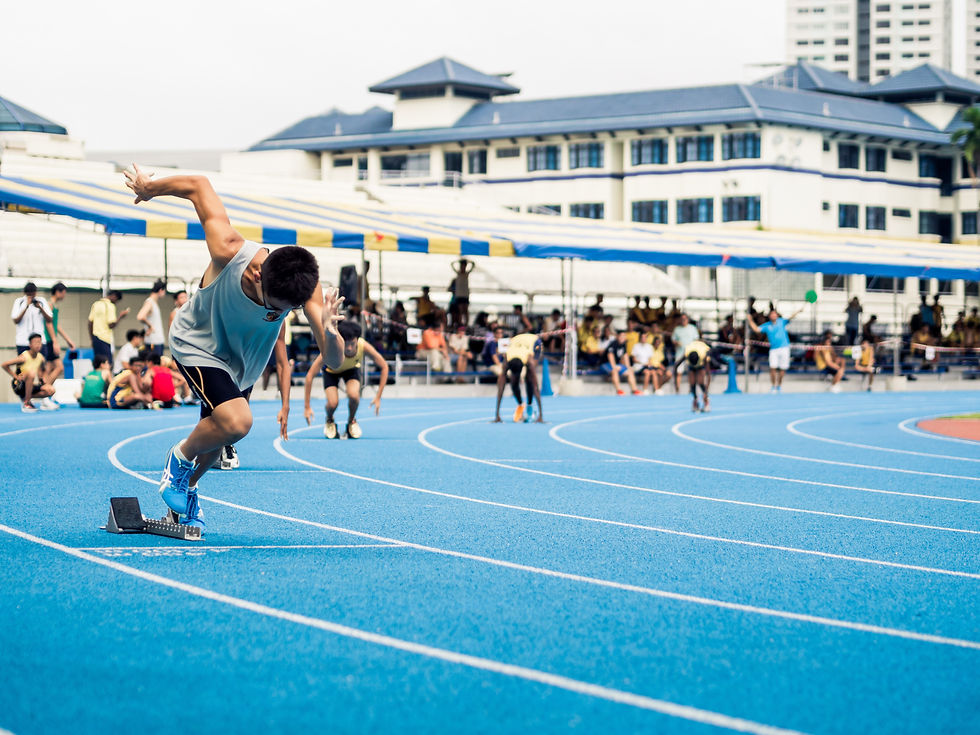Easy Does It: Top 8 Ways To Actively Recover
- Jason Gates
- Oct 12, 2018
- 3 min read
For many athletes, one of the hardest things is not completing scheduled hard workouts, but rather working in adequate recovery time into their training cycle. This usually results in issues like injury or burn out over the long term, hindering long term performance for the athlete. By scheduling in active recovery workouts and treating them as an actual training session, athletes can see greater gains and remain injury free over time.

First, we must understand what “active recovery” actually means. Recovery implies that you give your body and mind time to bounce back from the demands and stresses you have placed upon it. This is important because this is when your body truly grows. Not on hard workout days. On hard workout days you break the body down. On recovery days your body rebuilds and adapts to the stress you have placed upon it and becomes better suited to deal with that stress. The key is to place enough stress on the body to force it to adapt but not so much stress that you injury it. This is how you basically grow and get better.
Now just because you schedule recovery days into your program does not mean that they always need to be total or sedentary recovery days. Often times athletes will see that active recovery days actually facilitate faster recovery. The reason for this is because light physical activity facilitates blood flow, lengthens, and stretches ligaments and muscles to help flush the system faster. To recover faster try these top 8 ways to actively recover:
Swimming
Swimming is a great way to get a low impact total body workout. Try lap swimming for 30-60 minutes utilizing different strokes and drills for an active recovery workout.
Yoga
Yoga is an excellent recovery workout because it stretches and lengthens muscles and ligaments that are tight. It also helps with imbalances in the body. For an active recovery workout try to avoid classes like power yoga. We want to facilitate recovery, not break the body down more. Instead, choose a class designed to stretch and restore the body.
Easy Runs
Going on a very easy run for 30-60 minutes, depending on your ability level, is a great way to flush the legs without creating more trauma in your body. These runs should a 2 or 3 on a perceived effort scale of 1-10. Try even working in some walking and focus on light, low impact foot falls when striking the ground. To lessen the impact even more, try running on a treadmill or trails.
Lite Lifting Session
Focusing on a low rep, low intensity upper or total body lifting session is another great active recovery workout that will help improve strength and elongate muscles and ligaments. However, be careful not to overdo it. Choose low intensity movements and keep sessions somewhere between 20-60 minutes.
Massages
One of my favorite active recovery sessions are massages. They are a great way to work out imbalances, facilitate blood flow, and allow the mind to relax and recover, as well as the body. As a higher mileage runner, I will do both total body massages and foot reflexology massages to make sure I allocate enough time to the areas of my body that specific need attention. Be careful not to go too deep or hard with your massages on recovery days. This could lead to injury or hinder recovery if your body is too tired. Instead try an hour long Swedish massage.
Cycling
One of the best recovery workouts for athletes is to spin out the legs on the bike. This zero impact workout flushes the legs and works slightly different muscle groups that running does not. I will put my bike on my trainer and spin for 30 minutes at 100+ rpms (revolutions per minute) with little to no resistance. This also can be done on the road or trail if you have a mountains bike.
Rowing
Like swimming, rowing is a great way to get a total body non-impact workout if you do not have access to a pool. 20-30 minutes easy on a rowing machine should be adequate to speed recovery.
Non-Impact Activities
Any non-impact activity at low intensity for a moderate amount of time is a great way to actively recover. This could be on with an elliptical or rowing machine, bike, swimming, or many other activates. In the off season or during a recovery block for athletes that I coach, I will have them choose any activity that is not their primary sport (usually running) to help keep their aerobic base but help the body and mind recover before returning to sport specific training.
By implementing some of these active recovery workouts into your training schedule and treating them as actual training sessions, you will stay injury free and recover both mentally and physically faster. To learn more and to get customized coaching, check out the Ultra Expeditions website: https://www.ultraexpeditions.com/coaching




Comments